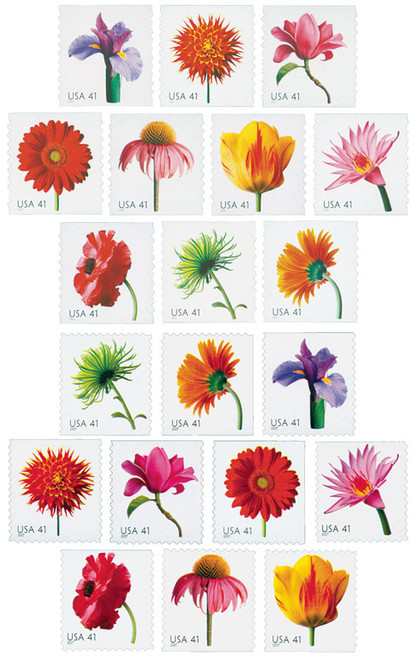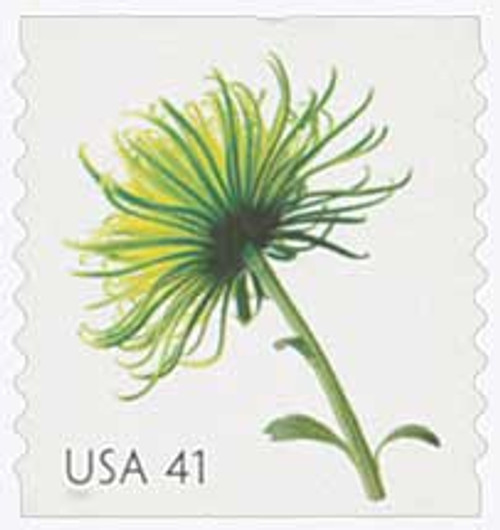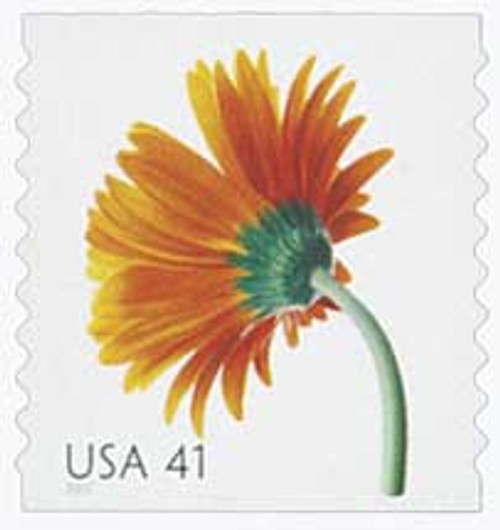
2007 41c Beautiful Blooms: Gerbera Daisy, coil
# 4169 - 2007 41c Beautiful Blooms: Gerbera Daisy, coil
$0.35 - $3.75
U.S. #4169
2007 41¢ Gerbera Daisy
Beautiful Blooms
Coil Stamps
2007 41¢ Gerbera Daisy
Beautiful Blooms
Coil Stamps
Issue Date: August 10, 2007
City: Portland, OR
City: Portland, OR
Printed By: Ashton-Potter (USA) Ltd
Printing Method: Lithographed
Perforations: Serpentine die cut 9 ½ vertically
Color: Multicolored
In 2007, the joy of flowers was featured on 10 stamps in a se-tenant coil. Whether waving in the wind or beautifying homes, colorful blooms enrich human life with visual beauty and delightful fragrance. In addition, flowers are often an important part of the celebration of special occasions, and are used to decorate both structures and people.
Flowers have another important function. The bloom is that part of a plant that ensures its survival – its reproductive organ. Flowers reproduce through pollination.
Some flowers contain both male spores (pollen) and female spores (ovules) that can be joined by the wind. Others have either a stamen (male) or pistil (female), and are usually pollinated by birds or insects like bees and butterflies that receive nourishment from the plants they pollinate. Seeds are formed from the union of the spores, which in turn can grow into new plants.
U.S. #4169
2007 41¢ Gerbera Daisy
Beautiful Blooms
Coil Stamps
2007 41¢ Gerbera Daisy
Beautiful Blooms
Coil Stamps
Issue Date: August 10, 2007
City: Portland, OR
City: Portland, OR
Printed By: Ashton-Potter (USA) Ltd
Printing Method: Lithographed
Perforations: Serpentine die cut 9 ½ vertically
Color: Multicolored
In 2007, the joy of flowers was featured on 10 stamps in a se-tenant coil. Whether waving in the wind or beautifying homes, colorful blooms enrich human life with visual beauty and delightful fragrance. In addition, flowers are often an important part of the celebration of special occasions, and are used to decorate both structures and people.
Flowers have another important function. The bloom is that part of a plant that ensures its survival – its reproductive organ. Flowers reproduce through pollination.
Some flowers contain both male spores (pollen) and female spores (ovules) that can be joined by the wind. Others have either a stamen (male) or pistil (female), and are usually pollinated by birds or insects like bees and butterflies that receive nourishment from the plants they pollinate. Seeds are formed from the union of the spores, which in turn can grow into new plants.















